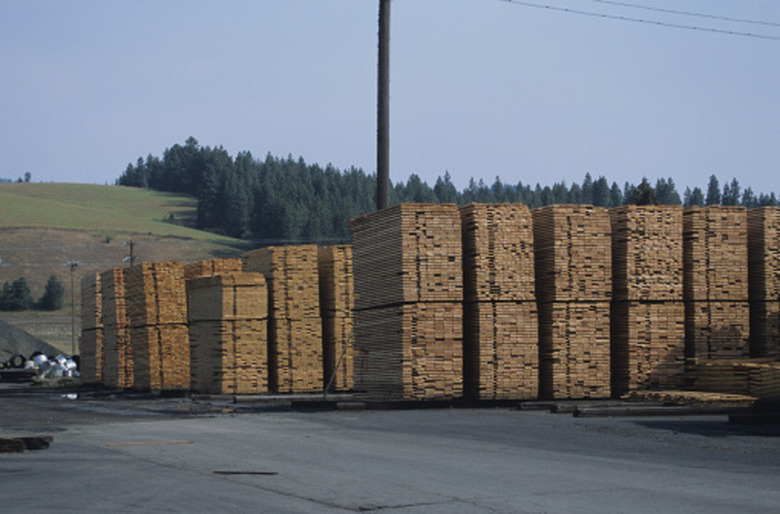Pressure Treated Wood Colors
Pressure treated wood is commonly used to construct decks and other outdoor structures such as gazebos and wooden patio furniture. It resists the elements because it is treated under high vacuum pressure that forces chemical wood preservatives into the fibers of the wood. The color of any particular piece or type of pressure treated lumber depends on the chemical that was used during the pressure treatment process.
Chromated Copper Arsenate - Green
Chromated Copper Arsenate – Green
The most common preservative used to pressure-treat lumber for home construction was chromated copper arsenate. Wood treated with this chemical is light-green in color, but as of 2004 the U.S. Environmental Protection Agency has banned the use of this type of lumber in home construction. The arsenic contained in this preservative is traced to both long and short-term health problems, and it is recommended to avoid prolonged contact with old wood that has been treated with chromated copper arsenate.
Copper Azole - Brown
Copper Azole – Brown
Copper azole mixtures, which combine copper with a fungicide from the -azole (nitrogen ring-based) chemical group, are considered a safe and effective replacement for chromated copper arsenate. A common copper azole mixture is "CA-B," a term that represents an industry standard for mixtures of copper and tebuconazole. It superseded an earlier mixture that also contained boric acid. Wood treated with copper azole mixtures is light brown when new, but its color fades to a silver-gray as the wood ages.
ACQ - Tan or Olive
ACQ – Tan or Olive
ACQ is the abbreviation for "Amine (or Ammonia) Copper-Quat" and it refers to wood that has been treated with a solution of amine or ammonia copper and a quaternary ammonium compound. Quaternary ammonium compounds are common and relatively safe bactericides and fungicides that are found in household cleaners as well as personal care products. Wood treated with ACQ, which is available in four different varieties designated as ACQ-A, -B, -C and -D, is tan or light olive color when fresh and it retains that color unless it is stained or painted.
Borate - Natural Wood Color
Borate – Natural Wood Color
Borate preservatives, derivatives of borax or boric acid such as sodium octaborate, sodium tetraborate and sodium pentaborate, are used to pressure-treat lumber of types that other preservatives cannot penetrate. It is not bonded to the wood as the other chemicals are; instead it is distributed, or diffused, throughout the wood. Borate treated lumber cannot be used outdoors, but because it is non-toxic it is often the lumber of choice for constructing home foundations. The color of wood treated with borate does not change from its natural color.
Oil Based Preservatives - Dark
Oil Based Preservatives – Dark
Creosote, used to treat railroad ties, pentachlorophenol, used to treat utility poles, and copper naphthenate, also used for utility poles, are all soluble in oil and rarely used for home construction. These preservatives pose health hazards and are therefore used only in applications where people do not come into contact with them. Creosote treated wood is dark brown; wood treated with pentachlorophenol or copper naphthenate can range from light to dark brown for pentachlorophenol or light brown to dark green for copper naphthenate.
